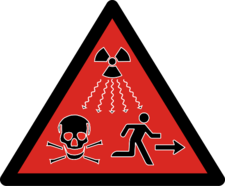Page content
Other hazard symbols
The GHS-CLP hazard symbols consist of a white diamond with a red border and a black pictogram. These symbols are mainly found in (chemical) substances. In addition to the GHS icons, you may also find other warning symbols for devices or rooms with those hazards. These warning symbols are triangular with a black icon on a yellow background. They have the same pictograms as those for hazardous substances. But you can also find others:
Radioactive substances
The cloverleaf is the international warning symbol for radioactive substances and ionizing radiation. This symbol can be found on the packaging of radioactive substances, on equipment in which a radioactive source is present and in areas where radioactivity is used.
Biological agents
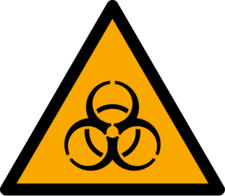
This international hazard symbol designed by Baldwin in 1966 is used to indicate the biological (infection) risk. Biological substances (biological agents) that pose a danger to human, plant or animal health and areas where such substances are handled are marked with this symbol.
Low temperature

Substances in an extremely cold state (cryogenic substances) are provided with this symbol. Most cryogenic substances are gases condensed into liquids such as liquid nitrogen (-196 ºC), helium (-269 ºC) and oxygen (-183 ºC). Carbonic snow, solid carbondioxide or dry ice (-78 ºC) is also a cryogenic substance.
Explosive atmosphere
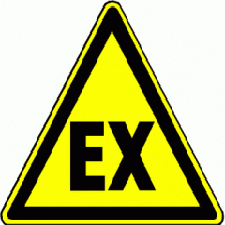
An explosive atmosphere can occur when flammable gases, vapor, mist, or dust are mixed with ambient air (oxygen). An explosive area is indicated by this symbol (ATEX 137 directive). Equipment in this area must be explosion-proof (ATEX 95 directive).
Nanomaterials
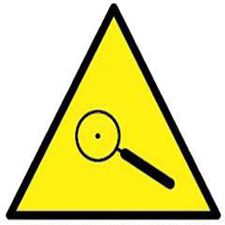
In addition to their normal chemical or physical properties, nanoparticles also have special properties or risks associated with their size and shape. Rooms in which nanoparticles are handled, which pose a potential health risk, are marked with this symbol. It is not a legally prescribed pictogram.
Choking hazard
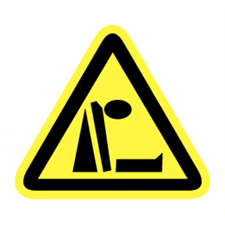
The risk of suffocation is especially present in rooms where cryogenic substances such as liquid nitrogen are used. Large amounts of evaporating dry ice can also displace oxygen.
Asbestos
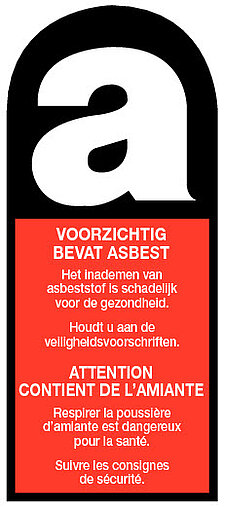
Asbestos is a substance that is strong, wear-resistant, insulating, fire-resistant but also carcinogenic. It was widely used until the eighties. Materials in which asbestos is incorporated still occur. You may come across the hazard sticker below on devices or materials that contain asbestos.

